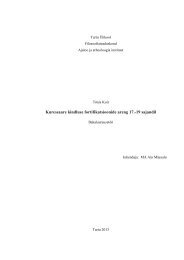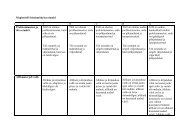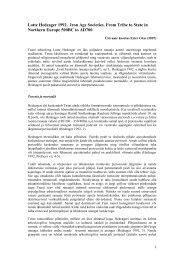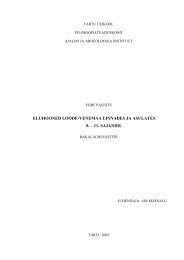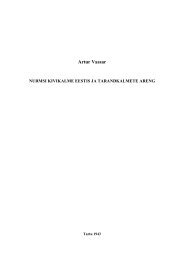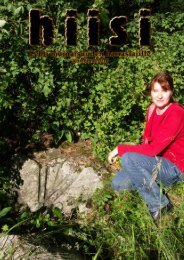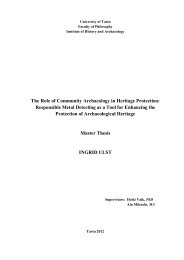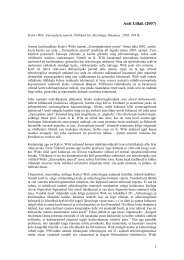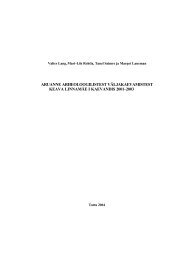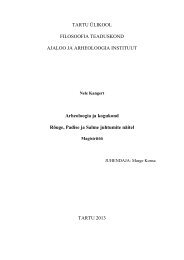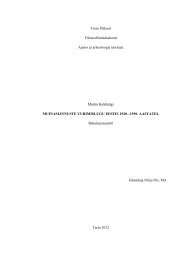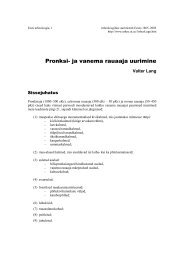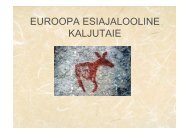PDF file (4 MB) - Arheoloogia Tartu Ãlikoolis
PDF file (4 MB) - Arheoloogia Tartu Ãlikoolis
PDF file (4 MB) - Arheoloogia Tartu Ãlikoolis
Create successful ePaper yourself
Turn your PDF publications into a flip-book with our unique Google optimized e-Paper software.
Period, four probable areas of households can be seen. The number can be deduced<br />
from the location and number of stove remains and the dispersion of the artifacts. These<br />
households seem to have had houses (and, possibly, other buildings) that lacked any<br />
stone foundations. Everyday activities seem to have centered around the stoves, which<br />
has also been pointed out in ethnographical literature from later periods.<br />
Two house sites with stone foundations were discovered during the archaeological<br />
excavations of the settlement site. The first of them was a pit-house that had been dug<br />
into the ground within the full range of its ground area. It could be dated to the Late<br />
Mediaeval or Early Modern Period. The probable area of the house and its surroundings<br />
were especially rich in the number of artifacts collected. Near the pit-house, a site of a<br />
probable summer kitchen was discovered. One of the aforementioned probable<br />
households was situated directly to the south from the pit-house. If one were to draw an<br />
imaginary line in the east-west direction through both of the households, it could be<br />
seen that contemporary households in the village are situated on the same line. This<br />
certainly shows a remarkable continuity in the settlement’s history.<br />
The second house site had been situated on a slope, and only a part of it had been dug<br />
into the ground. The part dug into the ground was the one that had the stone foundation.<br />
The house was situated near the lowest part of the valley, quite far away from all the<br />
other probable buildings and households. From this building, considerably fewer<br />
artifacts were collected. It is notable that almost all pieces of iron slag gathered from the<br />
settlement site were found from the nearby area of the building, therefore the building<br />
may have been used as a dwelling of a poor family, as a sauna, or as a smithy. The<br />
building may also have been used for all of the functions when necessary; one of them<br />
does not exclude the others.<br />
The bulk of the ornaments and weapons found from the settlement site date from the<br />
Late Iron or Early Mediaeval Period (52% of the ornaments and 62% of the weapons).<br />
This may be related with the ban for the peasants to bear any weapons or show that the<br />
material culture of the villagers was getting somewhat poorer during the postcolonization<br />
centuries. It might also be a question of the formation of the material, but<br />
the possible reason remains unknown. Contrary to the described tendencies, the bulk<br />
(60%) of the ceramics collected from the settlement site can be dated into the Early<br />
111



